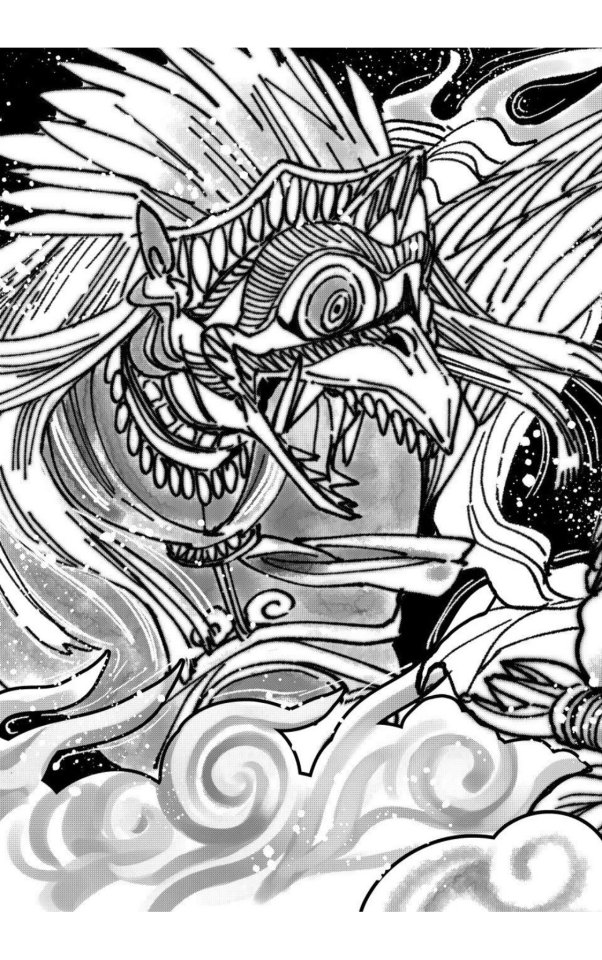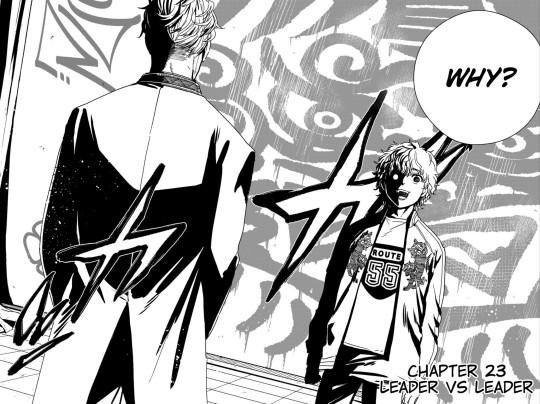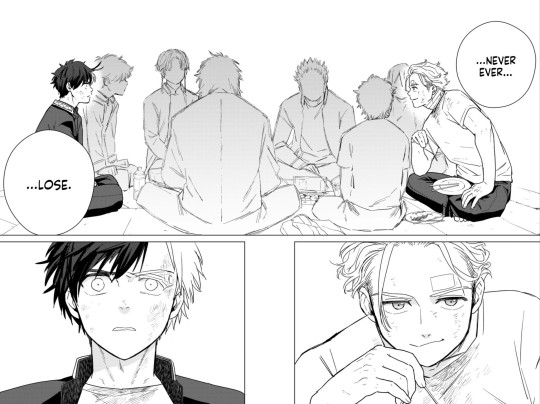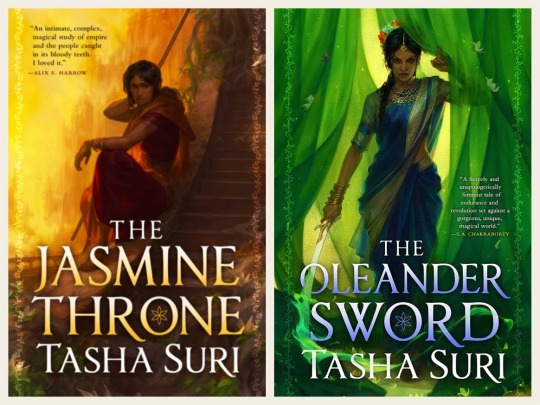#India ranks among
Text
"It was widely described as the week that India’s beleaguered democracy was pulled back from the brink. As the election results rolled in on Tuesday [June 4, 2024], all predictions and polls were defied as Narendra Modi lost his outright majority for the first time in a decade while the opposition re-emerged as a legitimate political force. On Sunday evening, Modi will be sworn in as prime minister yet many believe his power and mandate stands diminished.
For one opposition politician in particular, the humbling of the strongman prime minister was a moment to savour. Late last year, Mahua Moitra, one of the most outspoken critics of Modi and his Bharatiya Janata party (BJP), found herself unceremoniously expelled from parliament and kicked out of her bungalow, after what she described as a “political witch-hunt” for daring to stand up to Modi.
The murky and allegedly undemocratic circumstances of Moitra’s expulsion from parliament was seen by many to symbolise Modi’s approach to dissenting voices and the steady erosion of India’s democracy. She was among several vocal opposition politicians who were subjected to investigations by government crime agencies.
But having won a landslide re-election in her home state of West Bengal, Moitra will return once again to parliament, part of the newly empowered opposition coalition. “I can’t wait,” said Moitra. “They went to egregious lengths to discredit and destroy me and abused every process to do it. If I had gone down, it would have meant that brute force had triumphed over democracy.”
While he may be returning for a historic third term, many have portrayed the results as something of a defeat for Modi, who has had to rely on coalition partners to form a government. The BJP’s campaign had been solely centred around him – even the manifesto was titled “Modi’s guarantee” – and in many constituencies, local BJP candidates often played second fiddle to the prime minister, who loomed large over almost every seat. He told one interviewer he believed his mandate to rule was given directly by God.
“Modi’s aura was invincibility, that the BJP could not win elections without him,” said Moitra. “But the people of India didn’t give him a simple majority. They were voting against authoritarianism and they were voting against fascism. This was an overwhelming, resounding anti-Modi vote.”
During his past decade in power, Modi and the BJP enjoyed a powerful outright majority and oversaw an unprecedented concentration of power under the prime minister’s office, where key decisions were widely known to be made by a select few.
The Modi government was accused of imposing various authoritarian measures, including the harassment and arrest of critics under terrorism laws, while the country tumbled in global democracy and press freedom rankings. Modi never faced a press conference or any committee of accountability for the often divisive actions of his government. Politicians regularly complained that parliament was simply reduced to a rubber-stamping role for the BJP’s Hindu-first agenda.
Yet on Tuesday [June 40, it became clear that the more than 25 opposition parties, united as a coalition under the acronym INDIA, had inflicted substantial losses on the BJP to take away its simple majority. Analysts said the opposition’s performance was all the more remarkable given that the BJP stands accused of subverting and manipulating the election commission, as well as putting key opposition leaders behind bars and far outspending all other parties on its campaign. The BJP has denied any attempts to skew the election in its favour.
“This election proved that the voter is still the ultimate king,” said Moitra. “Modi was so shameless, yet despite them using every tool they had to engineer this election to their advantage, our democracy fought back.”
Moitra said she was confident it was “the end of Mr Modi’s autocratic way of ruling”. Several of the parties in the BJP’s alliance who he is relying on for a parliamentary majority and who will sit in Modi’s cabinet do not share his Hindu nationalist ideology...
Moitra was not alone in describing this week’s election as a reprieve for the troubling trajectory of India’s democracy. Columns heralding that the “mirror has cracked” and the “idea of India is reborn” were plastered across the country’s biggest newspapers, and editorials spoke of the end of “supremo syndrome”. “The bulldozer now has brakes,” wrote the Deccan Chronicle newspaper. “And once a bulldozer has brakes, it becomes just a lawnmower.” ...
“This was not a normal election, it was clearly an unfair and unlevel playing field,” said Yadav. “But still, there is now a hope and a possibility that the authoritarian element could be reversed.”
Harsh Mander, one of India’s most prominent human rights and peace activists who is facing numerous criminal investigations for his work, called the election the “most important in India’s post independence history”, adding: “The resilience of Indian democracy has proved to be spectacular.”
He said it was encouraging that an “intoxication of majoritarian hate politics” had not ultimately shaped the outcome, referring to Modi’s apparent attempts to stir up religious animosity on the campaign trail as he referred to Muslims as “infiltrators” and “those who have more children”.
“The past decade has seen the freedom of religion and the freedom of conscience and dissent taken away,” said Mander. “If this election had gone fully the BJP way, then India would not remain a constitutional secular democracy.”"
-via The Guardian, June 9, 2024
#india#pm modi#narendra modi#modi#bjp#lok sabha elections#democracy#authoritarianism#anti authoritarian#hindu#muslim#hindu nationalism#international politics#geopolitics#current events#2024 elections#voting matters#voting#good news#hope
235 notes
·
View notes
Text
Here's the discussion for Umemiya's deity representation as seen in the latest chapter. If you haven't seen my thoughts on Takiishi's yet then I've provided a link to that post as well.
(I hope you appreciate the better quality & organization of the post from my well-rested brain cells)
Part 1: Takiishi Chika and the Karura
Spoilers for Chapter 150!




In my last post, I discussed my theory that the bird-like deity depicted for Takiishi was a karura. With Umemiya, I believe the deity to be Fudō Myō-ō (不動明王, ふどうみょうおう) who is also known as the Immovable Wisdom King (Skt. Ācalanātha).


[Fudō Mask was sourced from the Japanese Buddhist Statuary: A to Z Phot Dictionary; (Wooden) Seated Fudō Myō-ō Statue by Kaikei created in 1203 sourced from Isumu (360° view available)]
Fudō Myō-ō is THE central deity among all of the Myō-ō (warlike or wrathful gods) groupings, but is most prominently featured among the Godai Myō-ō (五大明王, Five Great Kings) who are manifestations of the Five Transcendental Buddha. He was given the title as the Immovable One due to his unwaivering commitment to the protection of Buddhist teachings.
Orginating as a pagan deity from India, Fudō's conversion to Buddhism began with humble beginnings. He was assigned as a servant and messenger of Buddha himself and later achieving higher positions and later becoming a manifestation of the power and virtues of Dainichi Buddha, one of the 5 Transcendental Buddha I mentioned previously. (Source: MetMuseum)
In regards to their appearances, Fudō shares a remarkable resemblance to the deity depicted in Chapter 150. From his adornments, eyebrows, hair style, the prominent scowl etched into their faces and the long side braid (?) to the left of the face.
Aside from looks, let's talk about the prominent parallels between Umemiya and Fudō Myō-ō:
Origins. Both Ume and Fudō had to start over with their life, with Ume losing his family due to a car accident and Fudō being stripped of his former godhood after converting to Buddhism. Despite these, they were able to work their way up to be strong enough to protect what they valued the most.
Their roles. According to Schumacher in his page about Fudō,
"Fudō converts anger into salvation..."
- Schumacher, M., "Fudō Myō-ō"
"converts anger into salvation", that seems familiar- Oh wait.




Fudō and Ume are guides to enlightenment AND protectors. They themselves are symbols of safety in the eyes of those under their care.
Connections. While the Godai Myō-ō (Five Great Kings) aren't closely related to the Shitennō (Four Heavenly Kings) as the former rank far above the latter, there are similarities to be found. One is that both groups are in charge of the five directions, and yes five. The Shitennō is commanded by Taishakuten (帝釈天) who is the Lord of the Center. Relating this back to Ume and his Four Kings, it's interesting to note that the mangaka choose a higher ranking god to represent Ume rather than use Taishakuten. Perhaps to differentiate the power gap between Umemiya and his Four Kings?
Conclusion: I'm confident that Fudō Myō-ō is definitely the god representing Umemiya with the evidence I have gathered as well as several others have come to similar conclusions to the fact. It was really fun deep diving into this research for both Takiishi and Umemiya and with a clear headed than the previous post, perhaps I'd like to make another one but of Tomiyama and Togame (The Hare & The Tortoise) or Sakura and Sugshita (The Tiger & The Dragon). No promises though.
(P.S. I am not Japanese but I have been deeply interested in the culture and history. I do my best to use credible sources (both ENG and JPN) and give credit accordingly. However, I'm prone to slip ups so if there is anything that requires correction, notify me throught the post via reply/reblog.)
(P.S.S. I have a blog specifically made for wbk content for further post like this so feel free to visit me there @transient-winds )
#OKAY ITS DONE#*dies promptly*#see what happens when im not running on no sleep & food#umemiya the man u are#i understand the appeal tsubakino#wind breaker#wind breaker nii satoru#wind breaker chapter 150#umemiya hajime#hajime umemiya#takiishi chika#chika takiishi#umemiya vs takiishi fight
45 notes
·
View notes
Text

Almost 500 years ago, a tall African man arrived in Japan. He would go on to become the first foreign-born man to achieve the status of a samurai warrior.
Kidnapped as a child, Yasuke had ended up a servant and bodyguard to the head of the Jesuits in Asia, with whom he traversed India and China learning multiple languages as he went.
His arrival in Kyoto, however, literally caused a riot. Most Japanese people had never seen an African man before, and many of them saw him as the embodiment of the black-skinned Buddha.
Among those who were drawn to his presence was Lord Nobunaga, head of the most powerful clan in Japan. When Yasuke was presented to Oda Nobunaga, the Japanese daimyō thought that his skin must have been coloured with black ink. Nobunaga had him strip from the waist up and made him scrub his skin.
"His height was 6 shaku 2 sun (roughly 6' 2")... he was black, and his skin was like charcoal," a fellow samurai, Matsudaira Ietada, described him in his diary in 1579.
The average height of a Japanese man in 1900 was 5' 2" so Yasuke would have towered over most Japanese people in the 16th Century, when people were generally shorter due to worse nutrition.
Yasuke was not just different in height and appearance. He was also very muscular and well built. His strength can be compared to those of 10 men put together. He was indeed a born warrior, a hulk, and a samurai in waiting. One other feature that made Yasuke stand out was his level of intelligence. His mastery of the Japanese language in such a short time was a marvel to many. He was able to learn the culture and tradition of the people.
When Nobunaga realized that the African's skin was indeed black, he took an interest in him. Yasuke already spoke some Japanese and the two men got on well, according to academic Thomas Lockley, who has written a book on Yasuke. Nobunaga grew fond of Yasuke and treated him like family - the African was among a very select group of people allowed to dine with him.
Yasuke was taken in by the warlord to become his weapon bearer. To be a weapon bearer to the most powerful warlord in the whole of Japan was a great privilege and honor. The weapon bearer must also be one who can be trusted with secrets, especially those relating to affairs outside the state. Yasuke’s hard work and diligence paid off, and within a few months, he was rewarded with a home in Azuchi Castle, which was located in the north-eastern province of Kyoto. Yasuke also received a stipend and was gifted with a Katana sword. History has it that the Katana sword is regarded as the symbol of a samurai warrior.
When Nobunaga bestowed the rank of samurai on Yasuke the idea of a non-Japanese samurai was something unheard of. As the first foreign-born samurai, Yasuke fought important battles alongside Oda Nobunaga.
Yasuke at Wikipedia
329 notes
·
View notes
Text
Queer Fantasy Books Bracket: Round 1


Book summaries below:
Crier's War duology (Crier's War, Iron Heart) by Nina Varela
Impossible love between two girls —one human, one Made.
A love that could birth a revolution.
After the War of Kinds ravaged the kingdom of Rabu, the Automae, Designed to be the playthings of royals, took over the estates of their owners and bent the human race to their will.
Now, Ayla, a human servant rising the ranks at the House of the Sovereign, dreams of avenging the death of her family… by killing the Sovereign’s daughter, Lady Crier. Crier, who was Made to be beautiful, to be flawless. And to take over the work of her father.
Crier had been preparing to do just that—to inherit her father’s rule over the land. But that was before she was betrothed to Scyre Kinok, who seems to have a thousand secrets. That was before she discovered her father isn’t as benevolent as she thought. That was before she met Ayla.
Set in a richly-imagined fantasy world, Nina Varela’s debut novel is a sweepingly romantic tale of love, loss and revenge, that challenges what it really means to be human.
Fantasy, epic fantasy, science fiction, young adult, secondary world, romance
The Burning Kingdoms series (The Jasmine Throne, The Oleander Sword, The Lotus Empire) by Tasha Suri
Author of Empire of Sand and Realm of Ash Tasha Suri's The Jasmine Throne, beginning a new trilogy set in a world inspired by the history and epics of India, in which a captive princess and a maidservant in possession of forbidden magic become unlikely allies on a dark journey to save their empire from the princess's traitor brother.
Imprisoned by her dictator brother, Malini spends her days in isolation in the Hirana: an ancient temple that was once the source of the powerful, magical deathless waters — but is now little more than a decaying ruin.
Priya is a maidservant, one among several who make the treacherous journey to the top of the Hirana every night to clean Malini’s chambers. She is happy to be an anonymous drudge, so long as it keeps anyone from guessing the dangerous secret she hides.
But when Malini accidentally bears witness to Priya’s true nature, their destinies become irrevocably tangled. One is a vengeful princess seeking to depose her brother from his throne. The other is a priestess seeking to find her family. Together, they will change the fate of an empire.
Fantasy, epic fantasy, politics, romance, adult, secondary world, series
#polls#queer fantasy#crier's war#nina varela#iron heart#the burning kingdoms#tasha suri#the jasmine throne#the oleander sword#the lotus empire#tbk#crier#crier x alya#books#fantasy#booklr#lgbtqia#tumblr polls#bookblr#book#fantasy books#lgbt books#queer books#poll#book polls#queer lit#queer literature#gay books
16 notes
·
View notes
Photo

John Stuart Mill
John Stuart Mill (1806-1873) was a highly influential English philosopher of the Victorian Era. His writings were influenced by the Enlightenment thinkers and German Romanticism. Besides philosophical works, he wrote on mathematics, language, and logic. Well ahead of his time, he advocated the abolition of slavery and was a proponent of both children's and women's rights. However, he is best remembered for his essays on utilitarianism, a philosophy developed by Jeremy Bentham (1748-1832).
Life
Born on 20 May 1806 in London, England, John Stuart Mill was the son of the Scottish radical thinker James Mill. James had moved to London to promote Bentham's utilitarian philosophy. Through his father's use of the Socratic method, John was educated by James in the psychological and educational principles of utilitarianism. He was schooled in law, psychology, economics, mathematics, and logic. James Strangroom in his The Great Philosophers wrote that Mill's father's aim was to turn him into a calculation machine. Some believe James accomplished his goal. At the age of three, he read Greek, and at age eight, Latin. By the time he was 14, he had read most of the classic Greek and Latin texts in their original languages. Later, while still in his teens, he edited many of Bentham's unpublished manuscripts.
Like his father, at age 17, he began to rise through the ranks of the British East India Company, remaining there until it closed in 1858. He suffered a nervous breakdown when he was 20. Many believe his repeated bouts of depression were a reaction to the impersonal disciplined teaching of his father and the overwhelming domination that his father imposed on everything in his life. In his The Great Philosophers, Jeremy Strongroom wrote that Mill had been prepared for argumentation and analysis but received no training to help him cope with emotional moods. Luckily, his newfound interest in culture, theater, and the works of English poet William Wordsworth (1770-1850) helped him escape his depression.
In 1852, he married a long-time friend, Harriet Taylor, two years after the death of her first husband. She proved to have a significant influence on Mill as his foremost consultant and critic. She died in 1858. Seven years later, he became a member of Parliament (1865-1868) serving only one term. Mill died on 8 May 1873 in Avignon, France. Among his major works are A System of Logic (1853), On Liberty (1859), and The Subjection of Women (1869).
Continue reading...
23 notes
·
View notes
Text
The first step towards the crystallisation of what we today call Hinduism was born in the consciousness of being the amorphous, subordinate, other. In a sense this was a reversal of roles. Earlier the term mleccha had been used by the upper caste Hindus to refer to the impure, amorphous rest. For the upper castes, Muslims and especially those not indigenous to India, were treated as mleccha since they did not observe the dharma and were debarred from entering the sanctum of the temple and the home. Indigenous converts to Islam also came under this category but their caste origins would have set them apart initially from the amorphous Muslim. Now the upper and lower castes were clubbed together under the label of ‘Hindu’, a new experience for the upper castes.
This in part accounts for the belief among many upper caste Hindus today that Hinduism in the last one thousand years has been through the most severe persecution that any religion in the world has ever undergone. The need to exaggerate the persecution at the hands of the Muslim is required to justify the inculcation of anti-Muslim sentiments among the Hindus of today. Such statements brush aside the fact that there were various expressions of religious persecution in India prior to the coming of the Muslims and particularly between the Śaiva and the Buddhist and Jaina sects and that at one level, the persistence of untouchability was also a form of religious intolerance. The authors of such statements conveniently forget that the last thousand years in the history of Hinduism have witnessed the establishment of the powerful Śankarācārya maṭhas, āśramas, and similar institutions attempting to provide an ecclesiastical structure to strengthen Brahmanism and conservatism; the powerful Daśanāmi and Bairāgi religious orders of Śaiva and Vaiṣṇava origin, vying for patronage and frequently in confrontation; the popular cults of the Nāthapanthis; the significant sects of the Bhakti traditions which are to be found in every corner of the subcontinent; and more recently a number of socio-religious reform movements which have been aimed at reforming and strengthening Hinduism. It was also the period which saw the expansion of the cults of Kṛṣṇa and Rāma with their own mythologies, literatures, rituals and circuits of pilgrimage. What defines many Hindus today has roots in the period of Muslim rule. Facets of belief and ritual regarded as essential to Hinduism belong to more recent times. The establishment of the sects which accompanied these developments often derived from wealthy patronage including that of both Hindu and Muslim rulers, which accounted for the prosperity of temples and institutions associated with these sects. The more innovative sects were in part the result of extensive dialogues between gurus, sādhus, pīrs and Sufis, a dialogue which was sometimes confrontational and sometimes conciliatory. The last thousand years have seen the most assertive thrust of many Hindu sects. If by persecution is meant the conversion of Hindus to Islam and Christianity, then it should be kept in mind that the majority of conversions were from the lower castes and this is more a reflection on Hindu society than on persecution. Upper caste conversions were more frequently activated by factors such as political alliances and marriage circuits and here the conversion was hardly due to persecution. Tragically for those that converted on the assumption that there would be social equality in the new religion, this was never the case and the lower castes remained low in social ranking and carried their caste identities into the new religions.
When the destroying of temples and the breaking of images by Muslim iconoclasts is mentioned—and quite correctly so—it should however at the same time be stated that there were also many Muslim rulers, not excluding Aurangzeb, who gave substantial donations to Hindu sects and to individual brāhmaṇas. There was obviously more than just religious bigotry or religious tolerance involved in these actions. The relationship for example between the Mughal rulers and the Bundela rājās, which involved temple destruction among other things, and veered from close alliances to fierce hostility, was the product not merely of religious loyalties or differences, but the play of power and political negotiation. Nor should it be forgotten that the temple as a source of wealth was exploited even by Hindu rulers such as Harṣadeva of Kashmir who looted temples when he faced a fiscal crisis, or the Paramāra ruler who destroyed temples in the Caulukya kingdom, or the Rāṣṭrakūṭa king who tore up the temple courtyard of the Pratihāra ruler after a victorious campaign. Given the opulence of large temples, the wealth stored in them required protection, but the temple was also a statement of political authority when built by a ruler.
The European adoption of the term ‘Hindu’ gave it further currency as also the attempts of Catholic and Protestant Christian missionaries to convert the Gentoo/Hindu to Christianity. The pressure to convert, initially disassociated with European commercial activity, changed with the coming of British colonial power when, by the early nineteenth century, missionary activities were either surreptitiously or overtly, according to context, encouraged by the colonial authority. The impact both of missionary activity and Christian colonial power resulted in considerable soul searching on the part of those Indians who were close to this new historical experience. One result was the emergence of a number of groups such as the Brahmo Samaj, the Prathana Samaj, the Arya Samaj, the Ramakrishna Mission, the Theosophical Society, the Divine Life Society, the Swaminarayan movement, et al., which gave greater currency to the term Hinduism. There was much more dialogue of upper caste Hindus with Christians than there had been with Muslims, partly because for the coloniser power also lay in controlling knowledge about the colonised and partly because there were far fewer Hindus converting to Christianity than had converted to Islam. Some of the neo-Hindu sects as they have come to be called, were influenced by Christianity and some reacted against it; but even the latter were not immune from its imprint. This was inevitable given that it was the religion of the coloniser.
The challenge from Christian missionaries was not merely at the level of conversions and religious debates. The more subtle form was through educational institutions necessary to the emerging Indian middle class. Many who were attracted to these neo-Hindu groups had at some point of their lives experienced Christian education and were thereafter familiar with Christian ideas. The Christian missionary model played an important part, as for example in the institutions of the Arya Samaj. The Shaiva Siddhanta Samaj was inspired by Arumuga Navalar, who was roused to reinterpret Śaivism after translating the Bible into Tamil. The movement attracted middle-class Tamils seeking a cultural self-assertion. Added to this was the contribution of some Orientalist scholars who interpreted the religious texts to further their notions of how Hinduism should be constructed. The impact of Orientalism in creating the image of Indian, and particularly Hindu culture, as projected in the nineteenth century, was considerable.
Those among these groups influenced by Christianity, attempted to defend, redefine and create Hinduism on the model of Christianity. They sought for the equivalent of a monotheistic God, a Book, a Prophet or a Founder and congregational worship with an institutional organization supporting it. The implicit intention was again of defining ‘the Hindu’ as a reaction to being ‘the other’; the subconscious model was the Semitic religion. The monotheistic God was sought in the abstract notion of Brahman, the Absolute of the Upaniṣads with which the individual Ātman seeks unity in the process of mokṣa; or else with the interpretation of the term deva which was translated as God, suggesting a monotheistic God. The worship of a single deity among many others is not strictly speaking monotheism, although attempts have been made by modern commentators to argue this. Unlike many of the earlier sects which were associated with a particular deity, some of these groups claimed to transcend deity and reach out to the Absolute, Infinite, the Brahman. This was an attempt to transcend segmentary interests in an effort to attain a universalistic identity, but in social customs and ritual, caste identities and distinctions between high and low continued to be maintained.
— Romila Thapar, Syndicated Hinduism.
#reference#reading list#romila thapar#history#aijaz ahmad keeps using the phrase “syndicated hinduism”#and i needed an etymology
32 notes
·
View notes
Photo

Learning from India
Blaine Brownell looks to centuries-old Indo-Islamic architecture for lessons on how simple, passive strategies can make a big difference in confronting a warming climate.

India also offers model solutions for a climate-adaptive built environment with the potential for broad applicability. These approaches are evident in the county’s wealth of centuries-old Indo-Islamic architecture—monuments that rank among the world’s most historically significant and invite renewed analysis in light of today’s climate calamity.

451 notes
·
View notes
Text

Mickey Mouse Funhouse Opens Doors to Season 3 Next Month With Huey, Dewey and Louie
The third season of the whimsical animated preschool series Micky Mouse Funhouse will premiere Friday, February 23 on Disney Junior (9:30 a.m. EST/PST) and Disney Channel (10:30 a.m. EST/PST) before rolling out onto Disney+ later this year.
In the new season, Mickey, Minnie and their friends embark on more imaginative journeys through the magical doors of Funny the Funhouse (voiced by Harvey Guillén), returning them to places like the Enchanted Rainforest and the Old West and taking them to new locales like Movie Magic Land, as well as culturally rich locations like Armenia, Korea and India.
Along their adventures, they make new friends and meet up with beloved Disney characters like Huey, Dewey and Louie, unknow if they will be their regular versions or their DuckTales 2017 versions. The new season also includes an epic camping trip special and sees Mickey and the gang celebrating an array of holidays, including Noche Buena, Chuseok, Arbor Day and Hanukkah.
Since its premiere in August 2021, the series has amassed nearly half a billion hours of viewing across linear, streaming and Disney Junior YouTube and consistently ranks as a top 10 monthly series on Disney Junior YouTube. In 2023, the series ranked among the Top 5 most watched series on Linear TV for preschoolers.
#Mickey Mouse Funhouse#Phil Weinstein#Thomas Hart#Mark Drop#Disney Junior#Disney Jr#DuckTales#DuckTales 2017
50 notes
·
View notes
Text
WHO: Mexico has 5th highest COVID test positivity rate globally - Published Aug 14, 2024
According to the World Health Organization (WHO), Mexico is on several “top 5” lists nobody wants to be on.
On Tuesday, the WHO released its latest COVID-19 Epidemiological Update studying the 28-day period ending on July 21, 2024. Mexico is No. 5 in test positivity rate globally, No. 5 in new ICU admissions and it remains fifth in total number of COVID-related deaths.
The steady increase in cases has prompted health experts in the country to urge the public to resume wearing masks.
The WHO’s report reveals that 31% of the 85 participating countries reported elevated SARS-CoV-2 activity. Elevated activity is defined as anything above a 10% test positivity rate.
Mexico is fifth on this list after seeing a 37% test positivity rate during the most recent 28-day period. This number trails only the Republic of Moldova (75%), Belgium (67%), Switzerland (40%) and Spain (39.3%).
Mexico was among eight Latin American countries that saw new cases increase by more than 50% during the latest reporting period.
The WHO also revealed that among the 40 countries consistently reporting new hospitalizations, 21 registered an increase of 20% or greater in hospitalizations during the past 28 days compared to the previous 28-day period. Mexico is eighth on this list as new hospitalizations rose from 243 to 606 patients.
Among the 28 countries consistently reporting new ICU admissions, seven countries showed an increase of 20% or greater in new ICU admissions. Mexico is fifth on that list, too, with an increase greater than 100% as ICU admissions rose from 11 during the May 27-June 23 period to 24 during June 24-July 21.
Mexico also reported 2,152 new COVID-19 cases during the most recent 28-day reporting period, the third-most in the Americas behind only Colombia (2,892) and Canada (2,191). The 2,152 new cases were significantly higher than the 653 new cases reported during the May 27-June 23 period.
Mexico also ranks fifth in the world in total number of COVID-related deaths with 334,958 victims. Only the United States (1,219,487), Brazil (711,380), India (533,570) and Russia (402,756) have seen more COVID-related deaths than Mexico.
#mexico#mask up#pandemic#covid#covid 19#wear a mask#coronavirus#sars cov 2#still coviding#public health#wear a respirator
7 notes
·
View notes
Text
Hello Sophia,
I’ve been curious about any relationships and linkages between SMA title, Alba and Jinx. Finally, I’ve managed to discover Chris’ influencer profile on one marketing platform (note: Carbons Dating The Web estimated creation date: 2023-06-01).
There are some interesting facts and figures in the case study:
Premium US dog superfood brand, Jinx is redefining dog nutrition and is sold at Walmart stores across the country. Its audience are 71% female, typically single or married and aged in their thirties. English-speaking, Jinx’s followers are 84% US-based, with India, The Philippines, Indonesia and Brazil as secondary markets. Top cities for its customers include New York, LA, San Francisco and Chicago.
Looking at celebrity influences, Chris Evans does not appear in the list.
Media-wise, Buzzfeed, Betches Media, The New York Times, HGTV, The New Yorker, People Magazine, Vice and Bon Appetit come out on top for consumption.
Chris’ audience is 67% female, typically single and aged 25-34. English-speaking, his followers are typically based in the US, with Brazil, India, Italy and Mexico as other territories. Top cities include São Paulo, New York and LA. On basic demographics, Chris Evans and Jinx are rather well matched, particularly if the brand is hoping to reach a slightly younger customer base.
Diving into likes and interests, Film & TV rank highly, as well as music, dance, sport, college, poetry, Mexican food and spirituality. Pets is present, with 1.5% of the share, which is 1.3x the platform average, putting Chris Evan’s profile in the top 20% of all Instagram accounts for pets.
Looking at media consumption, Buzzfeed, BBC, CNN, 9GAG, New York Times, TIME Magazine, The New Yorker, GQ and Hugo Gloss dominate. Crucially, Jinx isn’t listed as one of Chris Evan’s follower’s main brand affinities. Instead, the likes of Marvel, Disney, NASA, Starbucks, Google, PlayStation and Sephora lead. That being said, no other pet food brand appears.
It is important to note that Chris Evans is one of a few celebrity investors in Jinx. However, he is still quite an organic brand ambassador, being known for his relationship with his dog. Overall, it’s a smart match for brand and talent that taps into authentic interests and with the addition of Evans as creative director for campaigns, it appears to be a more substantial collaboration than a simple awareness-based sponsorship.
November 2020 – Chris followed Alba.
16 November 2021 – Pooch loving celebs Trevor Noah, Chris Evans, NFL star Odell Beckham Jr. and CAA co-founder Michael Ovitz are among the latest high-profile investors in Jinx.
PageSix: Chris Evans and more A-listers invest in healthy dog food brand.
2022
9 March – Pet Age: Walmart Partnership Expands Distribution of Premium Dog Food Brand Jinx.
10 March – Pet Product News: Jinx Pet Food Now Available at Walmart.
21 May – People Mag: Chris Evans celebrates National Rescue Dog Day with adorable photo of himself and pet Dodger.
2 June – Buzzfeed announces Puppy interview.
18 June – Buzzfeed releases Puppy interview.
24 June – Alba’s first like in 2022 (iPhone post).
15 July – Laser focused interview.
16 July – Chris liked Alba’s MHGP post.
17 July – JustJared, Daily Mail and Buzzfeed report Chris Evans is laser focused on finding a partner (no mention of Alba).
18 July – People Mag: Chris Evans Says He's 'Laser-Focused on Finding a Partner' to Spend His Life With.
20 July – Chris’ Dating Poll by Buzzfeed.
27 July – Entertainment Tonight meet Chris Evans' 'Long-Term Partner': His Adorable Dog Dodger!
Forbes: Chris Evans Partners With Jinx Premium Dog Food.
Adweek: Chris is Future Jinx Ad Star.
CNN: Talking dog parenting with Chris Evans.
People: Chris Evans Says His Pet Dodger Is 'a Cut Above the Average Dog,' But Admits 'I'm Probably Biased'.
26 August – People Mag: Chris Evans Celebrates National Dog Day with Pup Dodger: 'In My House, Every Day.
27 August – E! news tweet: When Captain America found his perfect sidekick. ❤️ Happy #InternationalDogDay to Chris Evans & Dodger.
October – Alba deactivated her IG account.
6 October – People mag: the actor and his beloved rescue dog Dodger star in a new ad spot for dog food company Jinx.
11 October – Alba reactivated her account. Chris liked 2 WN posts.
7 November – SMA announcement on Monday's The Late Show With Stephen Colbert.
Chris Evans Is PEOPLE's 2022 Sexiest Man Alive.
Entertainment Tonight: Chris Evans Reacted to Getting 'People' Magazine's 2022 Sexiest Man Alive (editor Julie Jordan: “If he is dating someone he will talk about it or you will see him with the person”.
10 November – People: Chris Evans Is Dating Actress Alba Baptista: 'It's Serious,' Says Source — He's 'Never Been Happier'.
OK! Mag: Chris Evans & Actress Alba Baptista's Relationship Confirmed Months After Packing On The PDA At 'Super Affectionate' Date Night.
PageSix: Chris Evans and girlfriend Alba Baptista hold hands in first PDA photos.
12 November – Daily Mail: 'World's Sexiest Man' Chris Evans, 41, is seen holding hands with Alba Baptista, 25, for the FIRST time on a romantic stroll in Central Park.
E! News: Chris Evans & Alba Baptista Confirm Romance With PDA Stroll.
14 November – E! News tweet: The strongest bond in the universe (Dodger).
10 December – Alba deactivated her IG account.
2023
10 March – Alba reactivated her IG account.
18 April – Alba at Ghosted Premiere in NY.
26 April – People: Jinx to bring "The Dog Dream Box" to dog lovers nationwide.
28 April – Pet Food Processing: To celebrate Pet Month in May, Jinx launched a new limited-edition “The Dog Dream Box” collaboration with celebrity Chris Evans, brand ambassador at Jinx, and his dog Dodger.
J2 June – 40/29 News: 2023 Walmart Associates' Celebration.
62 notes
·
View notes
Text
Desaix / ドゼー and Clive / クレーベ
Desaix (JP: ドゼー; rōmaji: dozē) is the chancellor of Zofia who stages a coup of the kingdom in Fire Emblem: Gaiden and Echoes: Shadows of Valentia. He is named after Louis Desaix (JP: ルイ・ドゼー; rōmaji: rui dozē), one of the most highly regarded generals of the French Revolutionary Wars. Born into a noble house, Desaix began his military training at age eight. By age 15 he was a second lieutenant. After the Revolution began, he served under Victor de Broglie, chief of staff of the Army on the Rhine. Desaix would quickly ascend through the military, serving as a commander under Jean-Baptiste Jourdan and Jean Victor Marie Moreau during the invasion of Bavaria. Soon after meeting General Napoleon Bonaparte in Italy, Desaix was assigned to the campaign in Egypt. There he continued to prove a valuable asset as a commander in the Battle of Alexandria and Battle of the Pyramids. His victories over Murad Bey the Mamluks earned him the title of "Just Sultan" among the peasants of Egypt until authority was given to his fellow commander Jean-Baptiste Kléber. Desaix would join Bonaparte in Italy once more, where he died in the Battle of Marengo.
Clive is the former leader of Zofia's resistance force - the Deliverance - against the Rigelian Empire and Desaix's coup before relinquishing command to Alm. His name may be derivative of Robert Clive, a British baron and colonial, who became the first British to govern the Bengal Presidency largely credited for the East India Company planting roots in that region of India. More likely, it was a close approximation of Clive's Japanese name.
In Japanese, Clive's name is クレーベ (rōmaji: kurēbe), officially romanized as Clerbe. This seems to be a corruption of the surname of a contemporary to Desaix and Bonaparte, Jean-Baptiste Kléber (JP: ジャン=バティスト・クレベール; rōmaji: jan-batisto kurebēr). Unlike his fellow generals, Kléber was common-born, which withheld his promotion under the French Royal Army. At the outset of the Revolutionary Wars, he reenlisted, where he quickly rose through the ranks, eventually becoming second-in-command. He participated in the campaign in Egypt and Syria. However, when the expedition turned sour for Napoleon, the general withdrew, leaving the remaining French army holding Egypt in the hands of Kléber without a word prior. And it would be in Cairo that he would be assassinated, on the same day that his close friend Louis Desaix would be killed in action. While Kléber was highly regarded by Napoleon for his skill, Emperor-to-be had the commander buried on a remote island, fearing his tomb to be used as a symbol of Republicanism.
While the character of Clive is not of common birth, the reference to Kléber is likely meant to allude to his desire to fight alongside the commonfolk under the banner of the Deliverance. Him being in conflict against the encroaching empire could relate to Napoleon's interpretation of his character as representing Republicanism. Additionally, Clive stepping down from leadership of the Deliverance could be based on Kléber declining supreme command over the French Revolutionary Army.
On the other hand, Louis Desaix's position as "sultan" over Egypt during the bulk of the Egyptian and Syrian expeditions was likely the primary reason for Desaix's name and role in the story, aiding the Rigelian Empire's expansion into Zofia while gaining greater social standing over the region.
20 notes
·
View notes
Text
Modern MB headcanons
(Aka the sequel)
1. Arjun is a high ranking navy officer, but later on retires, to travel the world and teach kids dance.
2. Yudhishthira now has his own civil firm, a joint venture with Draupadi, and he is respected for his honesty and kindness for others.
3. Bhima is a celebrity chef, with a chain of restaurants, still known as Bhima ka Chulha.
4. Nakul is an A lister model and actor, who is very famous among the general public for his genuine nature, and zero involvement in scandals.
5. Sahadeva is a neurosurgeon, and has started his own chain of hospitals, with Nakul being an investor.
6. Balaram remains a teacher, but a very famous one, because of his chain of schools which teach underprivileged kids for free. He has also entered politics as an analyst as of now.
7. Draupadi is a criminal lawyer, and joint head with Yudhishthira. She is known to never lose a single case, and always get justice delivered to the victims.
8. Subhadra has her own practice, aside from which she works in Sahadeva's hospital, and has free camps in even the most remote parts of India.
9. Krishna never joins a political party, he is an independent candidate, but the public loves him, for he is the only politician who has genuine love for the people, selfless love, where he doesn't want anything in return. He is in the run for Member of Parliament from Mathura though, will you vote for him?
#mahabharat#mahabharata#arjun#subhadra#draupadi#krishna#balaram#bhima#nakul#yudhishthira#sahadeva#modern mahabharat au
36 notes
·
View notes
Note
I feel like the reason why people are pointing to JM akgaes is because there are more people in the current process of becoming JM akgaes, because the breaking point for a bunch of superbiased Jimin-biased Jikookers was the Face v. 7 comparison. Felt like this 'turnover' point for KTH akgaes from Tkkrs was 2017-18. The mistreatment rhetoric was everywhere and even today the Burn the Stage documentary is the holy grail of mistreatment for KTHs.
I wanted to ask you, BPP, what do you make of V's reduced streaming numbers in USA? I was surprised. Does this represent Army's true power with JM / JK's numbers being an additional cherry on top (or whole sundae on top) because of GP / casuals / solos ; or is this a sign of the 'split focus' so-called OT7s with a bias towards members who are central to BTS' image in the USA; or have KTHs done permanent damage to goodwill among Army?
I know you're not V biased but if you have a breakdown to offer I would be greatly interested. (Vminimin bias here).
***
I wanted to ask you, BPP, what do you make of V's reduced streaming numbers in USA? I was surprised. Does this represent Army's true power with JM / JK's numbers being an additional cherry on top (or whole sundae on top) because of GP / casuals / solos ; or is this a sign of the 'split focus' so-called OT7s with a bias towards members who are central to BTS' image in the USA; or have KTHs done permanent damage to goodwill among Army?
Ngl, this reminds me of the discourse about the difference in streaming performance between JITB and Indigo, where RM's streaming numbers were more than Hobi's in the US (and globally). Hobi akgaes thought it was weird considering Hobi had just done Lollapalooza and had a huge turnout. Just like back then, people discounted just how much the fandom shows that everyone here really just does what they want, how people's music preferences show up in their streaming habits, and they aren't coerced to stream like mindless orangutans in the fandom. Tae's album, just like Hobi's album, is really good, but it's also not in a genre a lot of people find accessible, very enjoyable, and can withstand streaming incessantly.
Look at the difference in streams between Yet to Come and RUN BTS.
All that aside, my perception is that the maknae-line have many people who bias them from the USA, but far as I can tell, Jimin has the most dedicated fans in the US, UK and Korea + Japan; Jungkook in the US, India, France and Japan; and Taehyung in China, SEA, and to a lesser degree, Japan and the US. I recall I've seen a few surveys here and there a few years ago (before 2019) that showed popularity rankings in various regions, but those rankings are no longer reliable as they've been gamed to hell by akgaes (usually Taehyung solos based on the instances and call-outs I've seen).
So, coupled with the fact not a lot of people care to constantly stream V's sleepy, vibey, but admittedly tasteful album because it's not their taste, it's also possible Taehyung has fewer heavily-biased fans in the US to compulsively stream his album, compared to Jimin or Jungkook. The fact any of the members show up on the charts at all is because of OT7 ARMYs, who have the absolute numbers to place the members high enough to chart even if each ARMY only contributes a handful of streams. Any group of akgaes who have been trying and failing to rechart on the most exclusive charts will tell you the same thing. It's literally a numbers game and ARMYs simply have the numbers.
Those who are biased generally push for the members they bias more, other factors like the genre and listenability of the song influences how the wider fandom responds, and the core of the fandom remains OT7 ARMYs who push each project in any case, and are the reason any of these projects can get those sort of recognitions to begin with.
These aren't comparisons that matter to me for any member, not for my biases and not for the maknae-line, because I do think they're unhelpful, generally very reductive, and only serve the purpose of inflating the egos of various akgaes who weaponize this data to show other members in the group are less deserving of their accomplishments and/or any support those members receive.
It's not like Tae's doing bad either lol.
#I sometimes get asks from various solo stans asking why they can't rechart this or that member on various charts#And I'm just like....#How do these people find me#bts chapter 2#taehyung#jimin#jungkook#bts maknae line#bts fandom#fandom behaviour
44 notes
·
View notes
Text
The world is burning an alarming amount of plastic, scientists say. (Washington Post)


Excerpt from this Washington Post story:
The world produces around 250 million tons of plastic waste in municipalities in one year — plastic bottles, cigarette butts, plastic packaging and much more. Much of that waste — equivalent to about the weight of 42 Great Pyramids of Giza — is put into landfills; some of it is recycled.
But now, a new study published Wednesday in the journal Nature shows that a large proportion of the plastic waste created across the world is burned in the open air, threatening human health and demonstrating the world’s ongoing struggle to manage its plastic pollution.
“This puts a magnifying glass on what goes wrong” with managing plastic waste, said Costas Velis, a lecturer in civil engineering at the University of Leeds and one of the authors of the paper,in a phone interview.
Twenty-one percent of all plastic waste is unmanaged, according to the new paper — meaning it never makes it to a landfill or recycling plant. A majority of that unmanaged waste, around 57 percent, is burned outside, creating deadly air pollution.
Several countries in the Global South rank among the largest contributors. India’s municipalities burned approximately 5.8 million metric tons of plastic in 2020, while Indonesia burned around 1.9 million tons. Russia also makes it into the top five, openly burning more than 1.4 million metric tons of plastic in the same year.
A spokesperson for the president’s office in Indonesia redirected questions to the Ministry of Environment and Forestry, which did not respond to inquiries on the study. The India Ministry of Environment, Forest and Climate Change also did not respond to a request for comment.
The researchers accumulated detailed data from over 500 municipalities, representing over 12 percent of the global population as of 2015. For each city, they utilized official datasets and surveys to analyze where its plastic waste ends up. They then used machine learning and statistical methods to estimate the fate of plastic in more than 50,000 places around the world.
4 notes
·
View notes
Text


Crier’s War by Nina Varela-
“After the War of Kinds ravaged the kingdom of Rabu, the Automae, Designed to be the playthings of royals, took over the estates of their owners and bent the human race to their will.
Now, Ayla, a human servant rising the ranks at the House of the Sovereign, dreams of avenging the death of her family… by killing the Sovereign’s daughter, Lady Crier. Crier, who was Made to be beautiful, to be flawless. And to take over the work of her father.
Crier had been preparing to do just that—to inherit her father’s rule over the land. But that was before she was betrothed to Scyre Kinok, who seems to have a thousand secrets. That was before she discovered her father isn’t as benevolent as she thought. That was before she met Ayla.”
The Jasmine Throne by Tasha Suri-
“The Jasmine Throne, beginning a new trilogy set in a world inspired by the history and epics of India, in which a captive princess and a maidservant in possession of forbidden magic become unlikely allies on a dark journey to save their empire from the princess's traitor brother.
Imprisoned by her dictator brother, Malini spends her days in isolation in the Hirana: an ancient temple that was once the source of the powerful, magical deathless waters — but is now little more than a decaying ruin.
Priya is a maidservant, one among several who make the treacherous journey to the top of the Hirana every night to clean Malini’s chambers. She is happy to be an anonymous drudge, so long as it keeps anyone from guessing the dangerous secret she hides.
But when Malini accidentally bears witness to Priya’s true nature, their destinies become irrevocably tangled. One is a vengeful princess seeking to depose her brother from his throne. The other is a priestess seeking to find her family. Together, they will change the fate of an empire.”
#sapphic book tournament#the burning kingdoms#the jasmine throne#the oleander sword#Tasha suri#crier’s war#the iron heart#sapphic books#lesbian#lesbian books#sapphic#lgbt#lgbt books#sapphic fiction#lgbt characters#lesbian romance#sapphic stories#sapphic characters#sapphic romance#Ayla x Crier#criers war#crier x ayla#lesbian fiction#lesbian characters#lesbian stories#lgbt fiction#science fiction#high fantasy#lesbian fantasy novels#fantasy
25 notes
·
View notes
Text
You mean a country that makes it harder for women to access birth control, access maternal healthcare, has maternal care deserts, has no mandated maternal leave as an increase in infant mortality?
The infant mortality rate in the U.S. rose last year for the first time in 20 years, according to a new report from the Centers for Disease Control and Prevention (CDC), with significant increases observed in two of the top causes of death.
Between 2021 and 2022, infant deaths in the U.S. rose by 3 percent. or 5.6 fatalities per 1,000 live births. The mortality rate for newborns also increased by 3 percent, while the mortality rate for non-newborn infants rose by 4 percent. The CDC noted this goes against a nearly 20-year trend.
“The infant mortality rate for the United States rose 3% from 2021 to 2022, the first year-to-year increase in the rate since 2001 to 2002,” the agency’s report stated. “From 2002 to 2021, the infant mortality rate declined 22%.”
The mortality rate among infants born to American Indian and Alaska Native non-Hispanic and White non-Hispanic mothers rose significantly more than the overall change, the CDC noted in its report. The changes in mortality rates observed among infants born to Black; Native Hawaiian or Other Pacific Islander; Hispanic; and Asian mothers were not statistically significant.
Four states were observed as having seen significantly increased infant mortality rates — Georgia, Iowa, Missouri and Texas — while Nevada was the single state to see significant drops in mortality in 2022.
Across different age groups of mothers, the infant mortality rate was only observed to rise among women between the ages of 25 and 29 between 2021 and 2022. Mortality rates also rose for all preterm infants, those born before 37 weeks of gestation, as well as male infants.
Among the top 10 leading causes of infant death, two rose significantly last year: maternal complications of pregnancy and bacterial sepsis of newborns. The top cause of infant mortality in 2022 was congenital malformations.
The agency noted the dataset is provisional and has yet to undergo a more comprehensive review so the final numbers may be slightly different.
The U.S. has a higher infant mortality rate compared to other developed countries. According to data from the Organisation for Economic Co-operation and Development, America’s infant mortality rate is one the top 10 highest among its 38 member states, ranking higher than Canada, the U.K., Australia, South Korea and Japan.
Many countries have infant mortality rates that are drastically higher, with India and South Africa reporting more than 25 infant deaths for every 1,000 live births.
I couldn't get a the whole map to download but i think this still makes the point

#usa#infant mortality#the Centers for Disease Control and Prevention (CDC)#Georgia#Iowa#Missouri#Texas#Good news for mothers and newborns in Nevada
13 notes
·
View notes